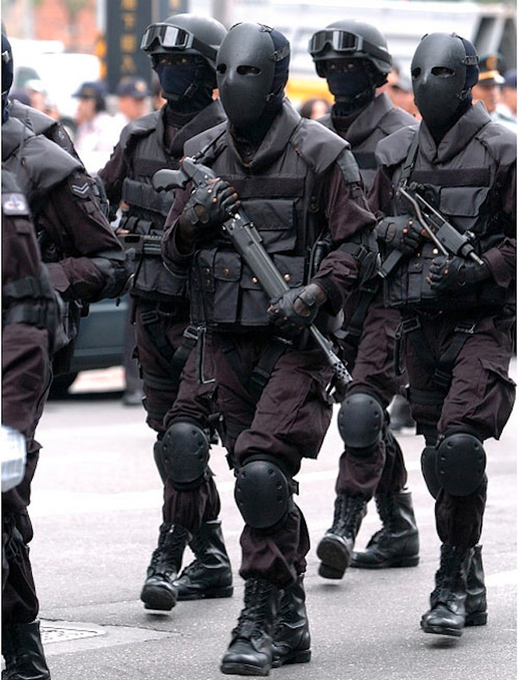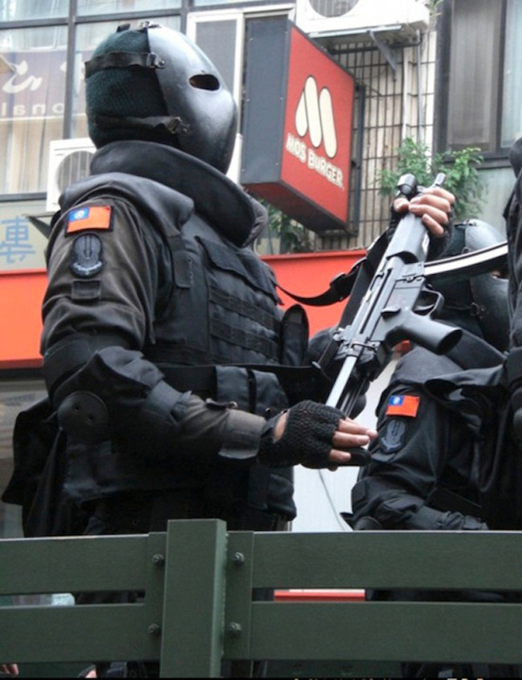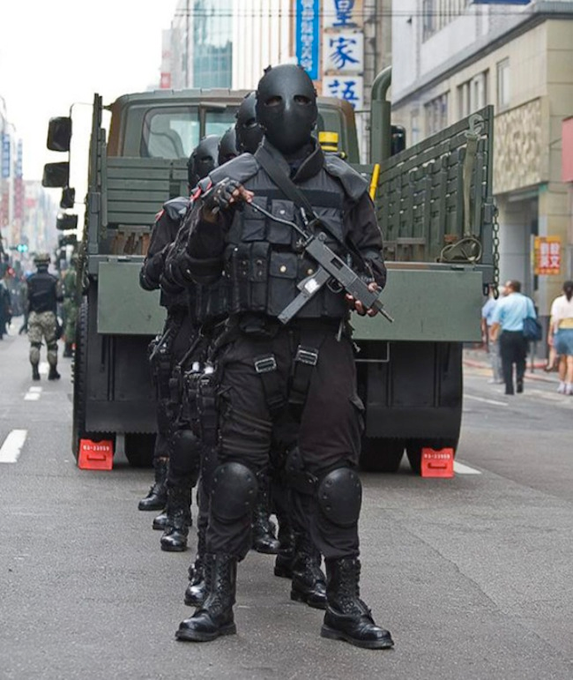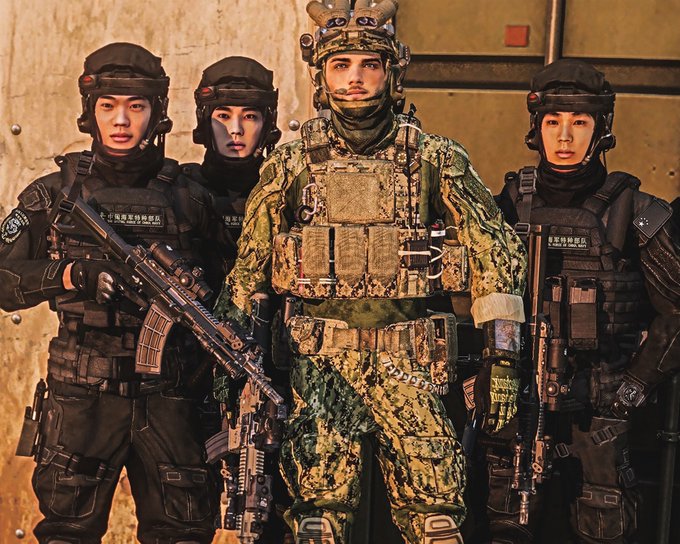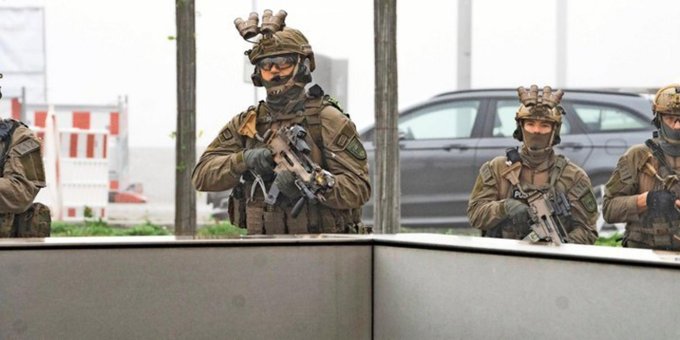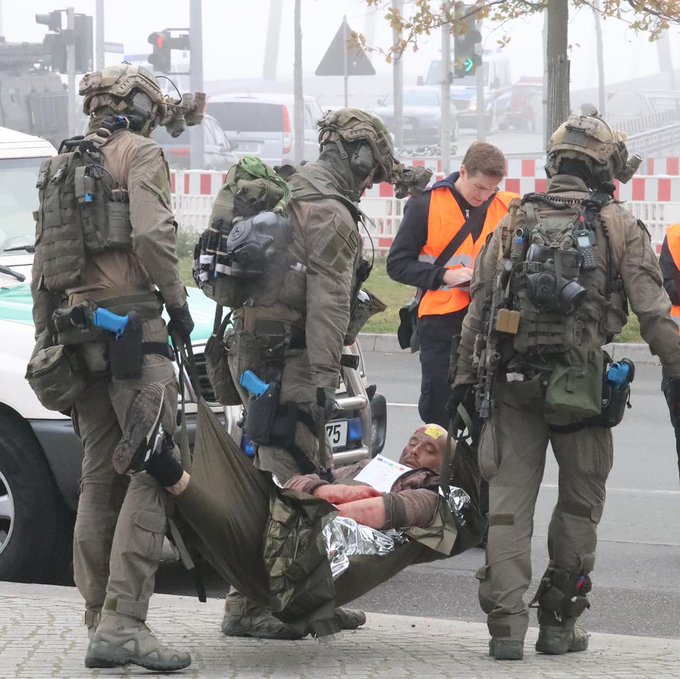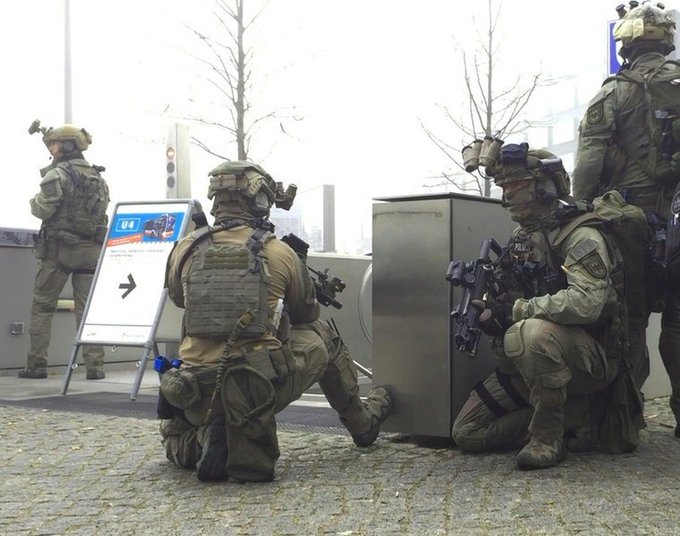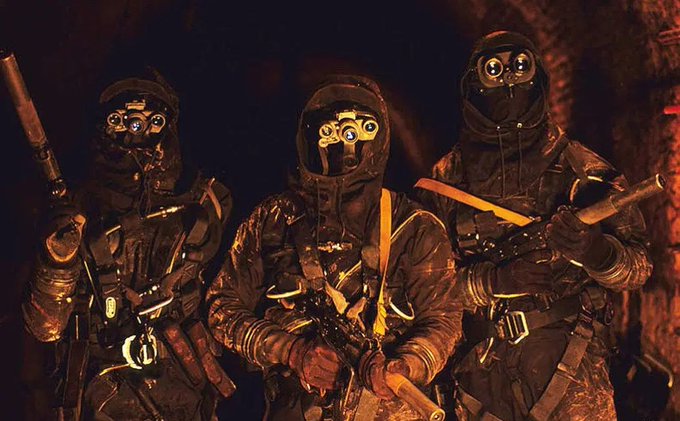Elite special forces are some of the most formidable and best trained units a country can boast. They scope out threats, conduct top secret missions, and go where many other troops fear to tread! From their insane training to undercover operations, you won’t believe the extents that some of the best of the best really go to!
MARCOS Commando
India’s Navy is one of the strongest maritime military forces in the world, and at the spearhead of that reputation is their Marine Commando Force also known as the MARCOS. The unit, first conceived in 1985, was formally known as the Indian Marine Special Force.
And over the years it’s acquired a deadly and terrifying reputation as a special operations unit. With a strength of approximately just 2000 operatives, the force has taken part in a litany of dangerous counter-insurgency missions, earning them the motto of "The Few and the Fearless".

To ensure the unit includes only the very best recruits, all applicants must have a history of service with the Indian Navy. They’re then put through a grueling 3 day pre-selection process testing their mental and physical fitness, which is so tough that it weeds out around 80% of applicants.Once they make it through to selection, they’re then faced with 5 weeks of daunting physical tasks designed to push their minds and bodies to the brink. That involves exercises like a weekly 74.5 mile march with a weighty 132 lb backpack, that’s like doing 3 marathons with a whole other person on your back every week! If they manage to make it through these blisteringly hard drills, they’ll enter the second stage of selection where they face the aptly named "Hell Week". Based on the notorious US Navy Seal training regime, it’s five days and five nights of demanding drills, with each day consisting of up to 20 hours of physical exertion.
Candidates will be lucky to receive a mere 4 hours of sleep over the week, but while their brains get soft from sleepiness, their bodies will be pushed hard. Exhausted beyond measure, candidates are then instructed to run through half a mile of thigh-high mud while hauling a 55 lb backpack across a route known as "The Death Crawl".
MARCOS - Indian Naval Special Forces | Marine Commandos (Military Motivational) by HUNT0810 Once complete, they’ll then run a further 1.5 mile obstacle course, rounded off with a shooting challenge where they open fire at a target with a fellow candidate stood right beside it! After going through all that, it's unsure how many people would have a steady hand, let alone a steady aim!And it’s only after that ordeal that candidates begin basic training. Over 13 weeks they’ll train with different organizations to master weapons skills, close combat, parachuting and diving, before moving on to a further 2 to 3 years of specialist training.Once they’ve mastered all there is to know about unconventional warfare and amphibious operations, they’ll finally be granted the title of
MARCOS operative! Though all that grueling training means that, from selection to graduation, a mere 2% of applicants make it through to the bitter end. The amount of courage and perseverance that hammers into the MARCOS operatives can be seen in their results, like their many anti-piracy operations.

Since 2008, they’ve thwarted at least 6 separate attempts made by pirates to hijack cargo and warships across the Arabian Sea and the Gulf of Arden. Each operation was handled so efficiently and professionally that the media began referring to the force as "Globo Cops". Another operation in 2012 saw a single MARCOS team come under heavy fire from an enemy militant force in Jammu and Kashmir. Even though they were vastly outnumbered and had no time to react, one operator boldly charged the enemy at the first chance he got. Though he was hit grievously in his chest and legs, he selflessly powered forward, advancing and firing rapidly to give his unit the upper hand and eventually dominate the enemy. It sounds tough, but compared to his training, that soldier probably thought it was a vacation!
Joint Task Force 2
The shining jewel in the crown of the Canadian Armed Forces is the universally respected special operations unit Joint Task Force 2 or JTF2 for short.
The unit was established back in 1993 when it took over counter-terrorist duties from the Royal Canadian Mounted Police. Back then it was comprised of just 100 operators, and while they were primarily tasked with internal counter-terrorism operations, they also specialized in direct action, special reconnaissance, and hostage recovery.
As part of the 2001 War on Terror, the unit was deployed straight into the belly of the beast: Afghanistan. there, they bolstered the efforts of Operation Enduring Freedom directly and fearlessly fighting the Taliban and Al-Queda on the enemy’s turf next to many other allied nations.
But at the beginning, JTF2 operations were kept so secret that even the Canadian Prime Minister was unaware the force was involved in
Afghanistan! Incredibly, they played a covert and critical role in that essential coalition, cementing their reputation as some of the most well trained and ultra-secretive operatives in the world.
Veil of Secrecy Lifted in JTF2 Demonstration (8/25/2012) by canmildoc While their reputation is undeniably fearsome, it’s nothing compared to the training that wannabe JTF2 soldiers have to endure. Each recruit must already have at least 2 years of military experience and will prove that they’re tough enough by undergoing a physical fitness week. That tests everything from how many 200 lbs squats and 165 lbs bench presses they can do, to how fast they can run!While being able to run 1.5 miles in 8 ½ minutes is enough to pass a standard military fitness test, JTF2 demands candidates can sprint that in about 8 minutes or less to make the cut! And when only the real brawn of the bunch remains, the harshest phase begins, psychological selection.Candidates are pushed to their breaking points in order to understand how they react under extreme pressure, like performing complex tasks in dizzyingly high places, confined spaces, or even deep underwater. Any phobias they have are weeded out and used against them for 7 mind breaking days, all while they’re critically sleep deprived.

The only way out of that waking nightmare is through sheer endurance! And only after that will they be considered for the Special Operator Assaulter Course, which consists of a further 10 months of intense specialist training. With so much pressure in the selection phase, it’s hardly surprising that less than one in 10 recruits make the cut!Because the selection phase is so demanding, the unit is only estimated to contain around 600 personnel. Although in that branch of the military, it’s not quantity, but quality that counts! And JTF2 has that by the bucket load.Back in 2017, a JTF2 sniper broke the world record for longest confirmed kill shot in military history by hitting the target from an astounding 2.2 miles away. That’s over half a mile more than the previous record, and would have required superior math skill, incredible eyesight, and unparalleled precision!
Footage of The LONGEST Sniper Kill Ever in History (JTF2 Operator) by BGrunty Although their operations are highly classified, it’s skills like that that implicate they’ve been involved in missions ranging from rescuing hostages in Iraq to hunting down Serbian snipers in Bosnia. They may be shrouded in such secrecy, but there’s no question that those are Canada’s most formidable fighters!
JW GROM
The Polish Military has five distinct special force units in its armada, but only one really brings the thunder. Known as the JW GROM unit, it’s an acronym that loosely translates to the Military Unit Group for Operational Maneuvering Response. And what’s more powerfully poignant is that "grom" translates to "thunder" in Polish, although ironically they’re anything but loud.
The force’s lineage can be traced back to the legendary exiled Cichociemni Polish paratroopers of World War II, who were unnervingly known as “The Silent Unseen”. That unit trained for months in Great Britain before jumping into occupied Poland to fight fearlessly against the fascist hold on the country.And today, that name is carried at the heart of the
GROM, who are responsible for special operations and unconventional warfare roles, especially counter-terrorism actions.
They perform rescue operations and hostage recovery, as well as counter insurgency missions. The unit are masters in a variety of military disciplines including parachuting, amphibious insertion, diving, pyrotechnics, and vehicle handling.
JW GROM || Pride of Poland by Military Division
Surprisingly, about 75% of operators are also highly trained medics, with the unit on stand-by to parachute to the aid of wounded soldiers out in the field at a moment’s notice. Alongside their skills with a scalpel, the surgical precision the unit uses to co-ordinate and execute special operations has earned them the formidable nickname of “The Surgeons.”And that clinical reputation is carried over into their training and selection processes, which were originally inspired by British SAS and American Delta Force practices. Alongside countless crunches and push-ups, each candidate’s endurance is tested through an appropriately named “truth-test”.
There, candidates are trained to the limits of extreme fatigue, all while having to correctly answer random questions from staff to demonstrate their mental endurance. Like that wasn’t hellish enough, recruits will then be purposefully malnourished while facing exhausting endurance marches over 30 miles of mountainous terrain inhabited by wolves and bears.

If fear and fatigue haven’t broken them by that point, they’ll move onto the toughest stage of selection. They’ll be dunked in ice water, hosed with pepper spray, and shocked by tasers, all during phases of increasingly difficult training tasks such as orienteering, patrolling, and shooting!With their bodies put through so much, candidates are expected to burn a mammoth 5000 calories a day, and some lose up to 15 pounds during the 6 day evaluation alone! Though the selection process loses much more, with just 1 to 5% of all applicants making it through to the very end. But the iron will that the training instils in GROM operatives is vital to the success of the unit’s missions.While roughly 70% of their operations are classified as top secret, some have been harder to conceal from the public eye. Even though the public may never get the full picture of all of the GROM’s victories, it’s not hard to see why they’re the pride of Poland!
101st Amphibious Reconnaissance Battalion
Taiwan is incredibly proud of its military prowess, and it goes to some pretty incredible lengths to showcase its imposing forces to the public. Parades involving truckloads of black-clad commandos wearing ballistic face masks like these in the image below:
Which are
made out of solid Kevlar and are intimidating, to say the least! But they’re not half as intimidating as the sheer amount of muscle on display from the country’s 101st Amphibious Reconnaissance Battalion, also known as the Sea Dragon Frogmen. That immensely ripped unit form the Republic of China Army’s special operations force dealing with underwater, amphibious, and coastal reconnaissance operations.They were established back in 1949 with training and equipment provided by the USA, effectively making them Taiwan’s answer to the US Navy Seals! They utilized that training and risked their lives to collect intelligence from communist China, as well as carrying out stealth missions on coastal installations.

Like the Seals, they’re prepared rigorously in sea, air, and land operations, with their missions including amphibious assaults, special reconnaissance, and underwater explosives! But as famously harsh as Navy Seal training is, the Sea Dragon Frogmen’s training is in a league of its own!
Over a 15 weeks of physical and mental stamina training, candidates will push their bodies through agonizing drills involving sand-crawling, boat-running, and even surf torture! Then, following a further 9 week amphibious training program, they’ll face their final and most brutal challenge: The Road to Heaven.There, they’re forced to drag their bodies over a 160 ft gauntlet of jagged rocks and stone, so despite its name, it’s more like a road to hell! Battered and bleeding, candidates will be made to perform a variety of painful tasks by instructors at different stages.
勇闖天堂路! 咬牙苦撐皮開肉綻 by 華視新聞 CH52
But if the instructors aren’t convinced that candidates are putting their entire heart and soul into each exercise, they’ll order them to start all over again from the very beginning! That short yet punishing regimen ensures that only 20% of all recruits make the final grade. And when they do, as a final showcase of their endurance, the newly graduated frogman will have his badge pinned straight through his flesh by his commander!While the military is all too proud to show off the fortitude of the Sea Dragon Frogmen, all information regarding their covert operations have been kept classified. Though that’s hardly surprising, seeing as their largest current threat is also worryingly their closest neighbor: China.After the Chinese civil war ended in 1949, Taiwan ruled by the confusingly named Republic of China, not actual China declared itself separate from the Chinese mainland. But China has made it clear ever since that Taiwan should be under its jurisdiction.However, it would need to take military control of the island, which is where the Sea Dragon Frogmen come into Taiwan’s defense plans. It’s unknown exactly how many members make up the unit, how much equipment they have, or how well prepared they are for an invasion. Such a secretive façade means that if China ever decides to take Taiwan by force, there’s no knowing how many brutally buff Frogmen would be ready to leap to Taiwan’s defense!

Jiaolong Commandos
But Taiwan isn’t the only country boasting a special force of Sea Dragons! Over in China, the People’s Liberation Army Navy has its own elite special operations force called the Jiaolong Commandos; a name that also means the Sea Dragons. That top-secret unit is tasked with various underwater operations, such as coastal infiltration, jungle patrol, and urban counterterrorism.
Even though they were only established in 2002, they’re widely regarded as the Chinese Navy’s most covert unit. Because it wasn’t until six years later, in 2008, that the world was made aware that
the Sea Dragons even existed! And just like their Taiwanese counterparts, very few details of their missions ever make it into the public eye.What is known is that, despite their name they don’t just stick to the water. That unit trains across terrains from scorching deserts to frozen mountains, conducting airborne, surface, and underwater infiltration missions. With the funding of the Chinese government behind them, they’re trained to use a unique arsenal of high class weaponry.Along with snipers, rifles, and rocket launchers, the unit also uses specialized underwater QBS-06 rifles also unnervingly known as ‘needleguns’. Bullets are subject to enormous hydrodynamic resistance underwater that causes them to quickly lose momentum, but those weapons also fire pointed steel darts to quickly incapacitate underwater enemies.
Jiaolong Commandos is an elite force unit of the #PLA Navy, specializing underwater operations by People's Daily, China 人民日报
In order to engage in that intense "diver vs diver" combat, recruits must first pass 3 months of hideously intense training. Combined with countless push-ups and press-ups, new recruits must be able to swim over 3 miles of treacherous water in under 2 ½ hours while in full combat gear! And each tactical exercise is repeated hundreds, if not thousands of times until every movement is practically ingrained into their muscle memory!They’ll then undergo extreme survival training, including mud combat, mock capture, and resistance training to prepare for being pursued or captured by enemy forces. There, recruits will be subject to over 52 hours of intensive interrogation tactics. They’ll face some of the worse torture methods imaginable, like extreme fatigue, food and water deprivation, and regular exposure to tear gas.Those hideously extreme training methods will be too much for many recruits, with more than 88% of them washing out. The few impenetrably tough recruits that remain will then receive specialist training in infiltration methods, such as fast roping from helicopters, parachuting, night operations, and explosive demolition.
The Jiaolong Commandos by CGTN Out on the ocean, their reputation for being the toughest unit in the Chinese navy precedes them, as proven by their mission involving the OS 35 cargo ship back in 2017. The bulk carrier had been hijacked by Somali Pirates in the Gulf of Aden, which unbeknownst to them is common escort-mission ground for the Sea Dragons. A single unit responded to the vessel’s distress signals, but before they could engage, the terrified hijackers immediately realized their mistake and fled!
The Chinese government are so confident in their abilities, that the deputy commander of People’s Liberation Army declared they could easily conquer Taiwan in just 3 days. That is a huge claim, considering the covert force of Taiwan’s own Sea Dragons.
GSG 9
During the 1972 Summer Olympic Games, the German city of Munich was besieged by an extremist plot, which ended in a catastrophe that dominated headlines around the world. German forces simply hadn’t been trained or equipped to deal with events like that. But to ensure it never happened again, the specialist counterterrorism unit Grenzschutzgruppe 9 was formed.
Abbreviated to GSG 9, the unit was established within the German police force, as it’s illegal to use military force against civilian populations under German law. Branching off the German federal police, GSG 9 became the country’s elite counterterrorism and special operations unit, and is primarily tasked with missions involving hostage rescue and terrorism countermeasures.To ensure that the unit is as efficient and unified as possible, all GSG 9 candidates must have gone through at least 2 years in the German police force. Candidates then undergo a five day aptitude test, which includes bench pressing 75% of their own bodyweight, completing altitude tests at dizzying heights, and mentally taxing psychological tests.Off those harsh examinations alone, only 10 to 15% of recruits then move on to basic training, although there’s nothing basic about it! It’s a 4 ½ month course focused on weapon handling, close quarter combat, navigation, climbing, rappelling, and medical training; all leading up to a hellish finale test known as “Härtewoche”.
Candidates are abandoned in the middle of no-where, with only a compass and limited provisions. In just a week, they must march for over 22 hours a day to reach a specified location within a given time limit. To maintain such a punishing pace, candidates make do on less than two hours sleep a night, and many collapse from sheer exhaustion. But even if they successfully drag themselves to the finishing line, that’s far from the end of their training. From there, they require a further 4 ½ months of specialist training in one of three operational units, made up of precision shooters, operational divers, or paratroopers. By the end, only around 8% of applicants successfully qualify into the ranks of GSG 9.
GSG 9 | German Special forces / Grenzschutzgruppe 9 by MILITARY CHANNEL That means a group of 200 wannabe operatives will be whittled down to a staggeringly low 16 recruits! That demanding selection has kept the unit’s numbers to around just 500 in total, but what they lack in numbers, the force makes up for in pure efficiency. Just four years after it was established, it was called to its first ever mission, Operation Fire Magic where it immediately cemented its reputation as an elite unit.
GIGN
Just one look at the unit of the French military is enough to let anyone know that the French mean business when it comes to national security.
But amazingly, that unit isn’t even a special force! Those apocalyptically badass uniforms actually belong to a French Combat Engineering Regiment. And if you thought those engineers looked imposing, just take a look below at the country’s top special force: The GIGN France’s premier counterterrorism and hostage rescue unit.
Its acronym translates roughly to National Gendarmerie Intervention Group, and though they look like military masters, that group actually sits under France’s arm of law enforcement. Like the GSG 9, it was founded shortly after the Munich attack of 1972. And since then,
The GIGN has risen into the top ranks of the world counter terrorism community, thanks to their rigorous training regimes.For a start, not just anyone can join the GIGN. Candidates must have served at least 4 years of service in the Gendarmerie, a military force with French law enforcement duties. Only then can they apply to put themselves through the hellish 3 month selection process.The standard physical test is comprised of a variety of elements: from candidates swimming 50 meters with their hands and feet tied, to seeing if they can run 5 miles with a weighty 44 lb backpack in under an hour. And that’s just the start.
Candidates nerves will be tested by strapping them into harnesses and making them walk onto a plank raised 65 ft off the ground. That’s as high as a 6-storey building! There, they’ll be drilled by instructors, who’ll demand everything from answers to uncomfortable questions, to the removal of their harness!That tests their nerves and common sense to see how well they follow orders and make intelligent decisions under extreme pressure. After a further 8 months of specialist training, wannabe GIGN operators come to the most insane sounding task of all, The Trust Shot.Clad in body armor, a candidate hangs a clay disk from his neck while another candidate tries to shoot the disk with live ammunition! By the end, less than 10% of candidates make it through, hopefully because they dropped out, and not because the other candidates had really bad aims!
GIGN Le tir de confiance The confidence shoot Manurhin MR73 by Emmanuel C
However, the unit relies on that high level of trust to undertake some of the most daring missions in the world. Such as the hijacking of flight 8969 in 1994. While on the runway, the Air France airliner and its some 200 crew and passengers were taken hostage by a group of Algerian terrorists.They had been planning to blow the plane up over the Eiffel Tower, but GIGN got involved before their appalling plan could ever take off. Disguised as airport personnel, they pretended to service the aircraft while planting eavesdropping devices on the fuselage and windows.Then, careful to keep the hostages out of harm’s way, 30 GIGN operatives stormed the aircraft and took out all 4 hijackers in just 20 minutes without losing a single hostage or operative! It goes without saying that that event solidified the GIGN as one of the most elite special forces in the world!
ASSAUT AVION by Ina Sciences If you were amazed at these elite special forces, you might want to read
part 1! Thanks for reading.








